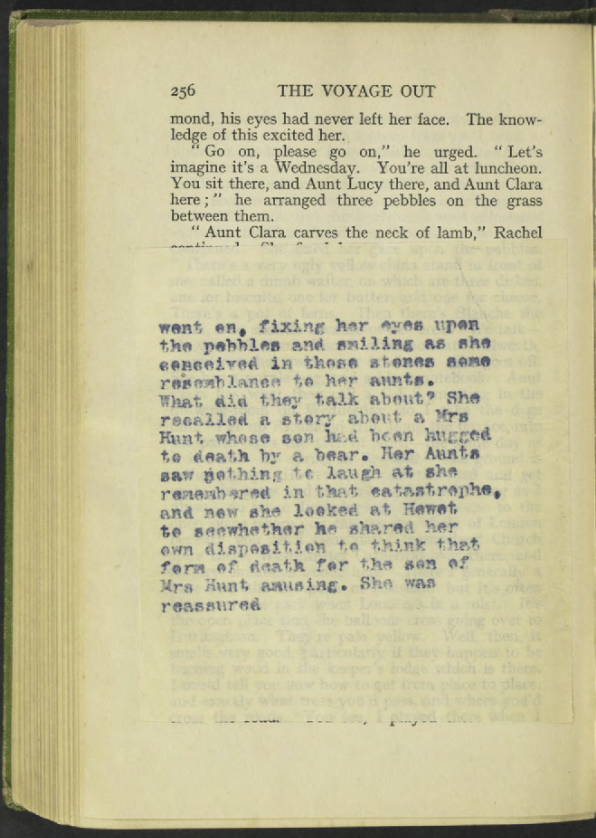
An annotated copy of Virginia Woolf's difficult debut novel shows her evolution in action.
Virginia Woolf’s first novel, The Voyage Out, was published in the UK in 1915, after which she wanted to tweak some passages for the printing of the US edition. We know this thanks to the work of unsung hero Simon Cooper, a metadata officer at the University of Sydney, who found Woolf’s own copy of the novel hiding in the science section of USyd’s rare books section (it had her signature on the title page), and has overseen its digitization for all to peruse.
The annotations include strikethroughs indicating future deletions, and pasted-in carbon paper with replacement text.
Per the BBC, it took Woolf seven years to complete The Voyage Out, which coincided with several “mental health breakdowns” (some might say “flares” in the modern parlance).
The revisions, some suggest, attempt to create more distance between Woolf and the main character of The Voyage Out, Rachel Vingrace, who is sailing to South America and whose biography and psychological condition resemble those of Woolf.
The decision to obfuscate Rachel’s inner workings also points the way to Woolf’s distinctly modernist style of writing, creating space between the character and reader, an unknowability that shrouds the places she wrote, also.

Professor Mark Byron, who works in the English department at the University of Sydney, wrote for The Conversation (syndicated in The Guardian) that:
The first set of changes occurs in Chapter XVI, where the conversation between Vinrace and Terence Hewet—the pair occupying the romantic plotline of the novel—is altered to reduce access to Rachel’s inner thoughts. Entire paragraphs are replaced by typed text pasted directly on to the page, where the narrator studies Rachel without the guarantee of understanding her.
There are several instances where Woolf indicated that sections should be deleted—excision as craft—though these were not executed on in the US edition. Sometimes you need to erase the guidelines you use to create the thing.
Whatever the motivation for the edits, Byron describes the novel as a ballsy first outing:
Woolf’s ideas on colonialism, women’s suffrage and gender relations were considered too dangerous for a first-time novelist.
Woolf followed up The Voyage Out with the successful Night and Day.
Take a look at her thinking here.
[h/t The Guardian]
Janet Manley
Janet Manley is a contributing editor at Literary Hub, and a very serious mind indeed. Get her newsletter here.



















